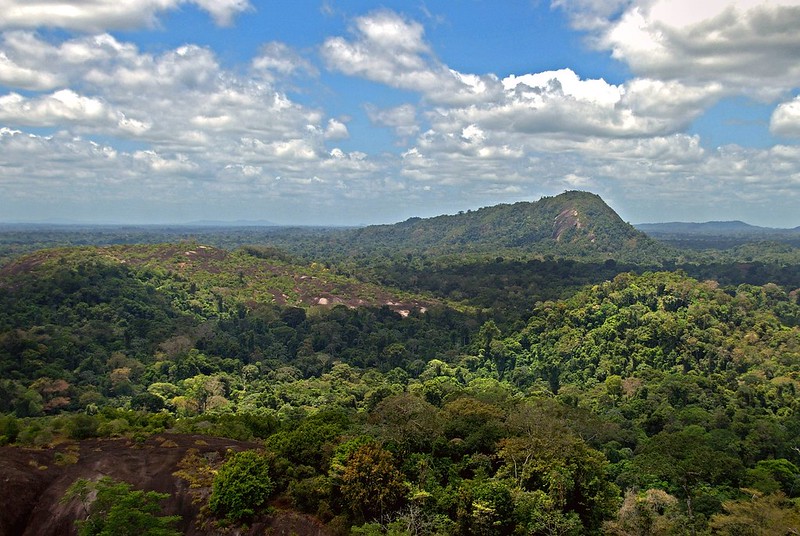The most forested country in the world is losing its forests

Nearly 90% of Suriname is forested
Anna Johnson – The South American country Suriname has long called itself the most forested country in the world. Every international traveler is greeted with a billboard in Suriname’s airport reminding them of that. But that reputation has been slipping away as the gold mining and logging industries have expanded into forested areas of the country. Along with their ecological future, the expansion of these industries and the legal framework that has enabled it has also put the future of Suriname’s Maroon and Indigenous peoples in jeopardy.
The Maroons are descendants of escaped slaves who created their own settlements on the land that has become central and eastern Suriname. They make up roughly one-fifth of the population in Suriname. Indigenous tribes are a much smaller percentage of the population, around 3.8%. Under their constitution, Suriname does not afford any special protections or recognition of Maroon or Indigenous persons and there is no official demarcation of their lands. The lack of official protections for the groups is part of Suriname’s geopolitical code, defining the government’s official relationship with their public and the rest of the globe. In 2007 Suriname’s government voted in favor of a UN Declaration on the Rights of Indigenous Peoples, giving them some leeway to claim their policies have recognized the rights of Indigenous groups. But since there is no enforcement mechanism in that declaration, Suriname has faced no consequences for failing to follow its articles. Instead, the government has favored the transnational businesses that have sought to take advantage of Suriname’s rich gold deposits and famous forests. In 2022, nearly 70% of Suriname’s total exports were gold, valued at over $2 billion. Along with logging, gold mining has cut its way through Suriname’s Amazon rainforest, carving out roads from traditionally Indigenous lands. Representatives of the Indigenous and Maroon communities that live around these highly profitable and expanding mines say agreements to allow foreign companies to mine the land and harvest from the forests puts their way of life at risk.
Groups like the Saamakan Maroons have tried to fight against the destruction of their lands by appealing to outside authorities. In 2007 the Inter-American Commission on Human Rights ruled in the Saamaka’s favor, saying Suriname should suspend harmful economic activities and recognize the territorial boundaries of the group. But these groups have found it difficult to organize as they are contending with both the Surinamese government and their own intra-tribal power dynamics and social divisions. Each different tribal community has its own hierarchy and sense of identity, further complicating their fight for recognition and protection. Especially as tribal identity conflicts with the national identity of Suriname and its economic goals.
Image Credit: David Evers, CC BY 2.0

